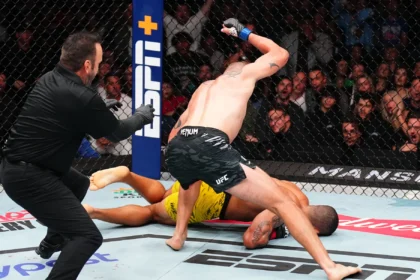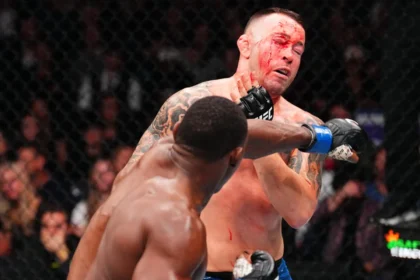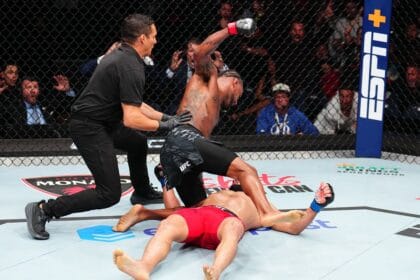Getting punched in the face is part of the job when you’re an MMA fighter.
But what happens to your nose after years of taking hits from trained professionals? Or exactly how often do professional MMA fighters break their nose?
Let’s dive into why that happens and what it means for fighters at every level.
Do MMA Fighters Break Their Nose Often
Yes, MMA fighters break their noses frequently. Research shows that about 10.4% of all MMA injuries are nose-related, making it one of the most common injuries in the sport. To put this in perspective, for every 100 fights, there are roughly 24-29 injuries, and a significant portion of these involve the nose.
Recent UFC events have shown just how common nose breaks are. Mike Perry suffered a severely deformed nose from a flying knee delivered by Vicente Luque at UFC Fight Night 156.

Similarly, Dustin Poirier’s recent bout against Islam Makhachev at UFC 302 left him with a broken nose among other injuries.

Female fighters aren’t exempt either. Miesha Tate suffered bilateral nose fractures in her fight against Ketlen Vieira at UFC Vegas 43, which led to a medical suspension.
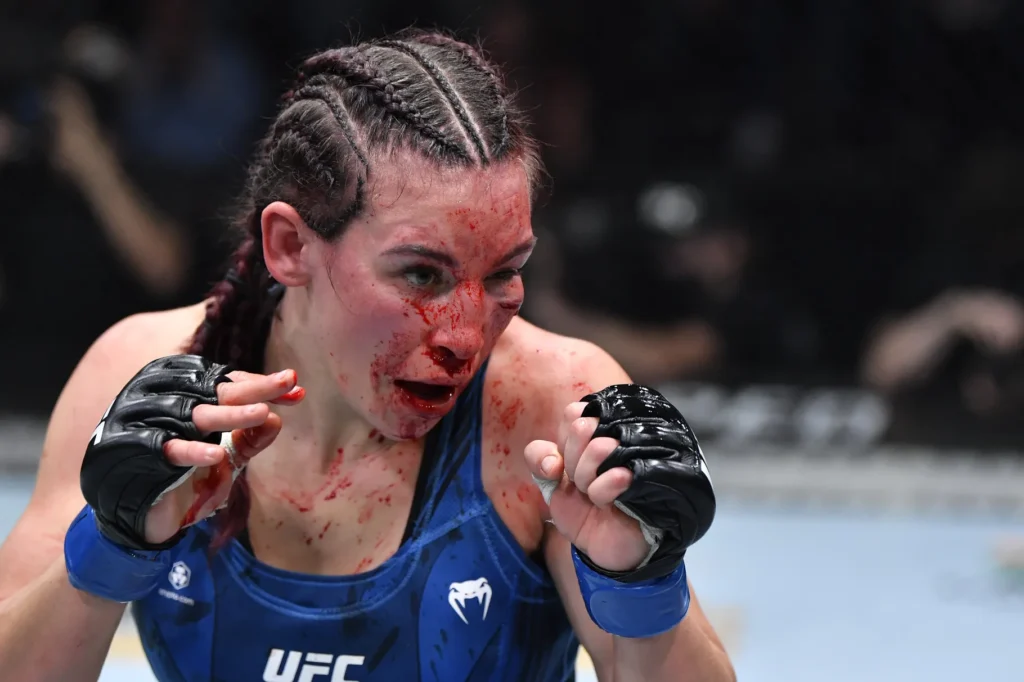
What’s particularly interesting is that most nose breaks actually happen during training, not fights.
Studies show that training injuries outnumber competition injuries by 4 to 1. Sean Strickland is infamous for breaking training partners’ noses during intense sparring sessions, showing how even practice can be dangerous.
Lower-ranked fighters typically break their noses more often than pros. This might seem surprising since professional fighters hit harder, but it makes sense when you consider that experienced fighters have better defenses and know how to protect themselves.
They’re also more skilled at proper striking technique, which means they’re less likely to take awkward hits that result in breaks.
The severity of nose breaks can vary significantly. While some fighters might get away with minor fractures that heal independently, others require surgery. Wanderlei Silva, for instance, needed complete nose reconstruction after years of fighting damaged his nasal structure beyond natural repair.
Do MMA Fighters Break Their Nose On Purpose?
No, MMA fighters absolutely do not break their noses on purpose. This is a common myth with no basis in reality. People think that if they break their nose on purpose, their nose will become stronger after it repairs itself, more like Cauliflower ears, but that’s not the truth.
Breaking your nose intentionally would be extremely dangerous and counterproductive. The nose is primarily cartilage, and while you can condition bone tissue to some degree, you can’t do the same with cartilage.
In fact, a broken nose can make future injuries more likely and potentially require surgery to repair.
How MMA Fighters Prevent Nose Injuries
The most fundamental technique is proper head positioning – keeping the chin tucked and head slightly forward makes the forehead the primary target instead of the nose.
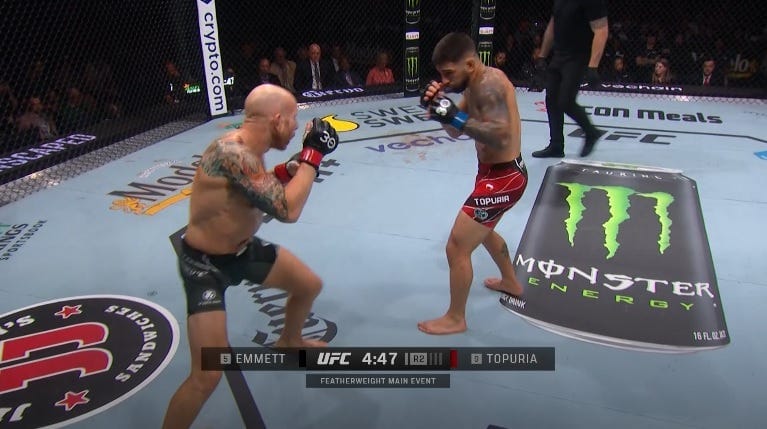
This simple adjustment significantly reduces the risk of direct nose impacts.
Defense is another crucial aspect of nose protection. Fighters maintain a tight guard with their hands positioned to intercept face-targeted strikes. They develop essential defensive moves like slipping, bobbing, and weaving to avoid strikes altogether.
As one experienced boxer noted on Reddit, these defensive movements become second nature after years of training, dramatically reducing the frequency of nose hits.
Protective gear plays a vital role during training. Many fighters, including top professionals like Canelo Alvarez, use headgear with nose bars during sparring sessions. While some beginners worry this might make them look inexperienced, the reality is that even elite fighters prioritize protection during training.

The key is not treating protective gear as invincibility armor but using it while developing proper defensive techniques.
Training intensity management is equally important. Fighters typically start with light technical sparring to build defensive skills before progressing to harder contact. Many gyms follow a gradual progression system where fighters only advance to full-contact sparring after mastering fundamental defensive techniques.
This methodical approach helps develop the skills needed to protect the nose while minimizing unnecessary injury risks during training.
Perhaps most importantly, fighters learn to listen to their bodies. If they experience nose pain or injury, they take adequate time to heal rather than rushing back to training.
This careful approach to recovery helps prevent minor injuries from becoming serious problems that could require surgery or end careers prematurely.





